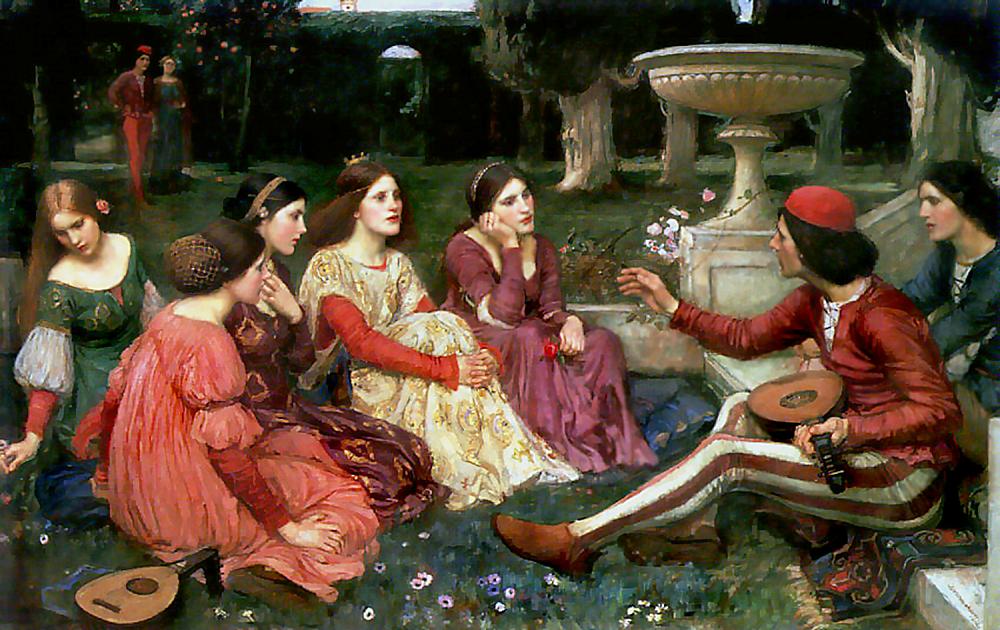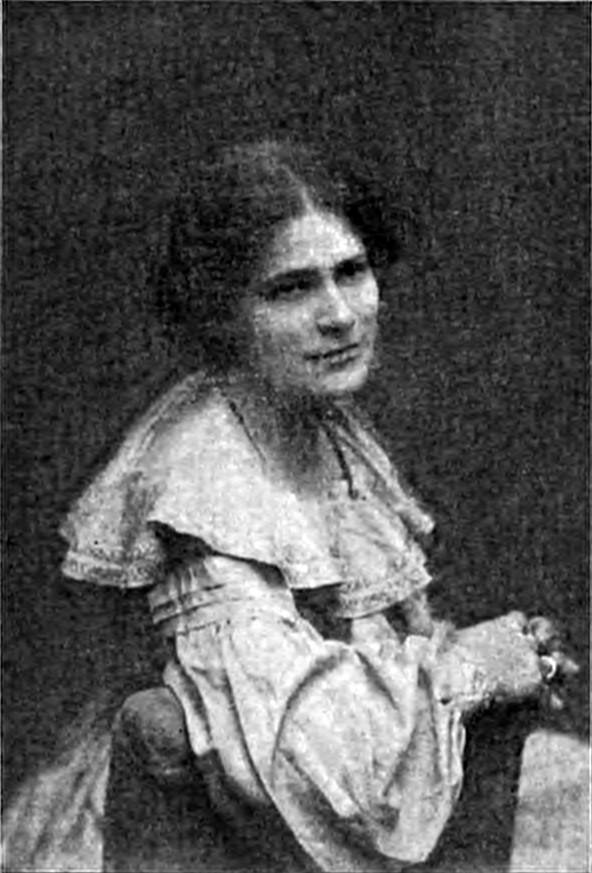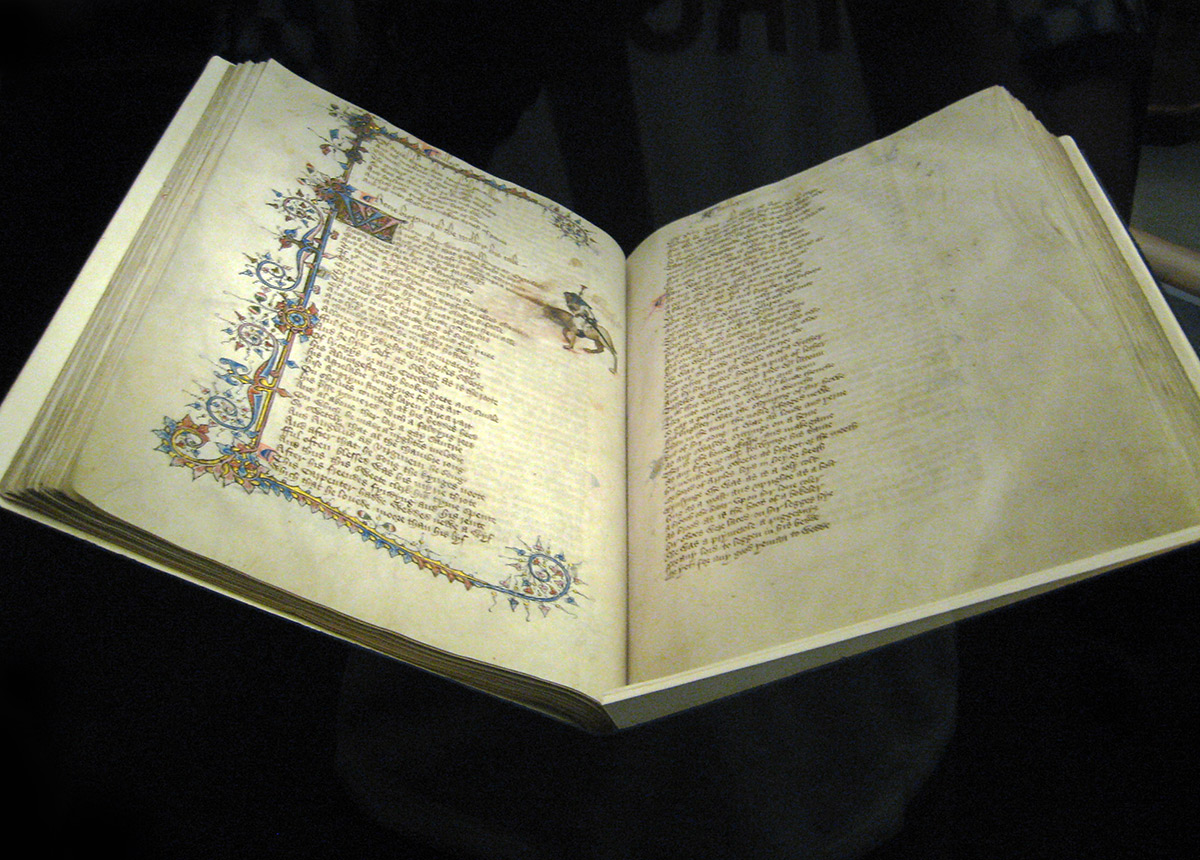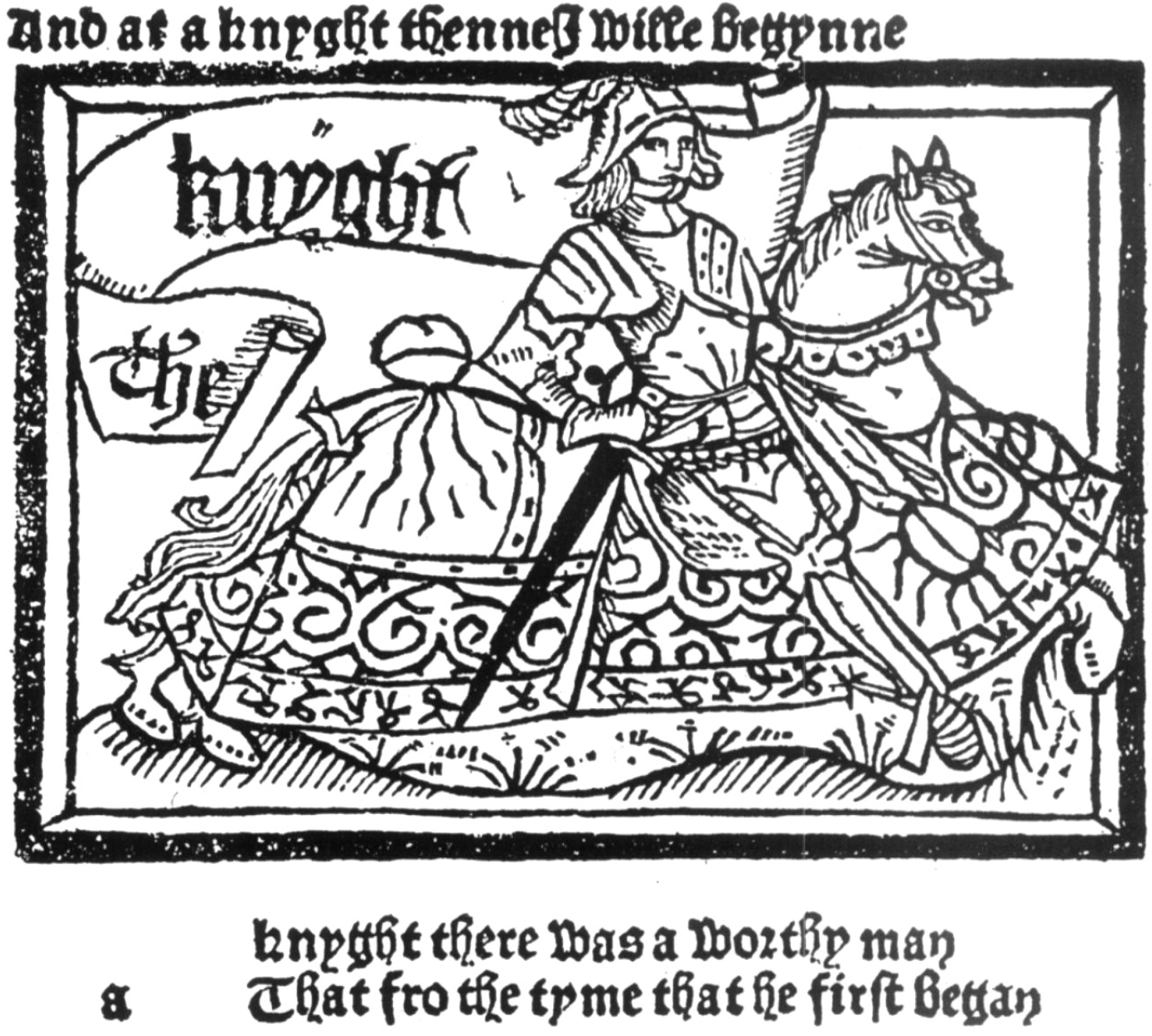|
The Canterbury Tales
''The Canterbury Tales'' () is a collection of 24 stories written in Middle English by Geoffrey Chaucer between 1387 and 1400. The book presents the tales, which are mostly written in verse, as part of a fictional storytelling contest held by a group of pilgrims travelling together from London to Canterbury to visit the shrine of Saint Thomas Becket at Canterbury Cathedral. The ''Tales'' are widely regarded as Chaucer's '' magnum opus''. They had a major effect upon English literature and may have been responsible for the popularisation of the English vernacular in mainstream literature, as opposed to French or Latin. English had, however, been used as a literary language centuries before Chaucer's time, and several of Chaucer's contemporaries— John Gower, William Langland, the Gawain Poet, and Julian of Norwich—also wrote major literary works in English. It is unclear to what extent Chaucer was seminal in this evolution of literary preference. ''The Canterbury Tale ... [...More Info...] [...Related Items...] OR: [Wikipedia] [Google] [Baidu] |
Woodcut
Woodcut is a relief printing technique in printmaking. An artist carves an image into the surface of a block of wood—typically with gouges—leaving the printing parts level with the surface while removing the non-printing parts. Areas that the artist cuts away carry no ink, while characters or images at surface level carry the ink to produce the print. The block is cut along the wood grain (unlike wood engraving, where the block is cut in the end-grain). The surface is covered with ink by rolling over the surface with an ink-covered roller ( brayer), leaving ink upon the flat surface but not in the non-printing areas. Multiple colours can be printed by keying the paper to a frame around the woodblocks (using a different block for each colour). The art of carving the woodcut can be called ''xylography'', but this is rarely used in English for images alone, although that term and ''xylographic'' are used in connection with block books, which are small books containing text ... [...More Info...] [...Related Items...] OR: [Wikipedia] [Google] [Baidu] |
John Gower
John Gower (; c. 1330 – October 1408) was an English poet, a contemporary of William Langland and the Pearl Poet, and a personal friend of Geoffrey Chaucer. He is remembered primarily for three major works—the ''Mirour de l'Omme'', ''Vox Clamantis'', and ''Confessio Amantis—''three long poems written in French, Latin, and English respectively, which are united by common moral and political themes. Life Few details are known of Gower's early life. He was probably born into a family which held properties in Kent and Kentwell Hall, Suffolk.Lee, Sidney (1890). "wikisource:Dictionary of National Biography, 1885-1900/Gower, John, Gower, John". In ''Dictionary of National Biography''. 22. London. pp. 299-304. Stanley and Smith use a Confessio Amantis#Language, linguistic argument to conclude that "Gower’s formative years were spent partly in Kent and partly in Suffolk". Southern and Nicolas conclude that the Gower family of Kent and Suffolk cannot be related to the Yorkshire ... [...More Info...] [...Related Items...] OR: [Wikipedia] [Google] [Baidu] |
British Library
The British Library is the national library of the United Kingdom. Based in London, it is one of the largest libraries in the world, with an estimated collection of between 170 and 200 million items from multiple countries. As a legal deposit library, it receives copies of all books produced in the United Kingdom and Ireland, as well as a significant proportion of overseas titles distributed in the United Kingdom. The library operates as a non-departmental public body sponsored by the Department for Culture, Media and Sport. The British Library is a major research library, with items in many languages and in many formats, both print and digital: books, manuscripts, journals, newspapers, magazines, sound and music recordings, videos, play-scripts, patents, databases, maps, stamps, prints, drawings. The Library's collections include around 14 million books, along with substantial holdings of manuscripts and items dating as far back as 2000 BC. The library maintains a programme for ... [...More Info...] [...Related Items...] OR: [Wikipedia] [Google] [Baidu] |
Printing Press
A printing press is a mechanical device for applying pressure to an inked surface resting upon a printing, print medium (such as paper or cloth), thereby transferring the ink. It marked a dramatic improvement on earlier printing methods in which the cloth, paper, or other medium was brushed or rubbed repeatedly to achieve the transfer of ink and accelerated the process. Typically used for texts, the invention and global spread of the printing press was one of the most influential events in the second millennium. In Germany, around 1440, the goldsmith Johannes Gutenberg invented the movable type, movable-type printing press, which started the Printing Revolution. Modelled on the design of existing screw presses, a single Renaissance movable-type printing press could produce up to 3,600 pages per workday, compared to forty by History of typography in East Asia, hand-printing and a few by scribe, hand-copying. Gutenberg's newly devised hand mould made possible the precise and rapi ... [...More Info...] [...Related Items...] OR: [Wikipedia] [Google] [Baidu] |
William Caxton
William Caxton () was an English merchant, diplomat and writer. He is thought to be the first person to introduce a printing press into Kingdom of England, England in 1476, and as a Printer (publishing), printer to be the first English retailer of printed books. His parentage and date of birth are not known for certain, but he may have been born between 1415 and 1424, perhaps in the Weald or wood land of Kent, perhaps in Hadlow or Tenterden. In 1438 he was apprenticed to Robert Large, a wealthy London silk Mercery, mercer. Shortly after Large's death, Caxton moved to Bruges, Belgium, a wealthy cultured city in which he was settled by 1450. Successful in business, he became governor of the Company of Merchant Adventurers of London; on his business travels, he observed the new printing industry in Cologne, which led him to start a printing press in Bruges in collaboration with Colard Mansion. When Margaret of York, sister of Edward IV, married the Charles the Bold, Duke of Burgund ... [...More Info...] [...Related Items...] OR: [Wikipedia] [Google] [Baidu] |
Edith Rickert
Edith Rickert (1871–1938) was a medieval scholar at the University of Chicago. Her work includes the ''Chaucer Life-Records'' and the eight-volume ''Text of the Canterbury Tales'' (1940). Life and career Rickert was born in Dover, Ohio, to Francis E. Rickert, a pharmacist, and Caroline Josephine Newburgh. She was a member of Vassar College's class of 1891. Rickert's name and achievements are linked with those of John M. Manly (1865–1940). Close colleagues and collaborators for some 40 years at the University of Chicago, they worked jointly on the C''haucer Life-Records'' and the ''Text of the Canterbury Tales'', which took sixteen years to complete, the first volume of which Rickert did not live to see published. Manly, president of the Modern Language Association of America (1920) and later of the Medieval Academy of America (1929–30), was posthumously recognized by being awarded such honors as the Haskins Medal for his work on the Chaucer Geoffrey Chaucer ( ; � ... [...More Info...] [...Related Items...] OR: [Wikipedia] [Google] [Baidu] |
John M
John is a common English name and surname: * John (given name) * John (surname) John may also refer to: New Testament Works * Gospel of John, a title often shortened to John * First Epistle of John, often shortened to 1 John * Second Epistle of John, often shortened to 2 John * Third Epistle of John, often shortened to 3 John People * John the Baptist (died ), regarded as a prophet and the forerunner of Jesus Christ * John the Apostle (died ), one of the twelve apostles of Jesus Christ * John the Evangelist, assigned author of the Fourth Gospel, once identified with the Apostle * John of Patmos, also known as John the Divine or John the Revelator, the author of the Book of Revelation, once identified with the Apostle * John the Presbyter, a figure either identified with or distinguished from the Apostle, the Evangelist and John of Patmos Other people with the given name Religious figures * John, father of Andrew the Apostle and Saint Peter * Pope John ( ... [...More Info...] [...Related Items...] OR: [Wikipedia] [Google] [Baidu] |
Ellesmere Chaucer
The Ellesmere Chaucer, or Ellesmere Manuscript of the Canterbury Tales, is an early 15th-century illuminated manuscript of Geoffrey Chaucer's ''Canterbury Tales'', owned by the Huntington Library, in San Marino, California (EL 26 C 9). It is considered one of the most significant copies of the ''Tales''. History Chaucer scholarship has long assumed that no manuscripts of the ''Tales'' exist dating from earlier than Chaucer's death in 1400. The Ellesmere manuscript, conventionally dated to the first decades of the fifteenth century, would therefore be one of the first extant manuscripts of the ''Tales''. More recently, the manuscript has been dated to c. 1405 or earlier, leading to speculation that it "was conceived as an immediate response to Chaucer's death by those eager to commemorate his memory through the appropriate preservation of his work."Edwards, A.S.G. "The Ellesmere manuscript: controversy, culture and the Canterbury Tales." ''Essays and Studies'', vol. 2010, annual 20 ... [...More Info...] [...Related Items...] OR: [Wikipedia] [Google] [Baidu] |
Hengwrt Chaucer
The Hengwrt Chaucer manuscript is an early-15th-century manuscript of the ''Canterbury Tales'', held in the National Library of Wales, in Aberystwyth. It is an important source for Chaucer's text, and was possibly written by someone with access to an original authorial holograph, now lost. The ''Hengwrt Chaucer'' is part of a collection called the Peniarth Manuscripts which is included by UNESCO in its UK Memory of the World Register, a list of documentary heritage which holds cultural significance specific to the UK. It is catalogued as National Library of Wales MS Peniarth 392D. Following the terminology developed by John M. Manly and Edith Rickert, the manuscript is conventionally referred to as Hg in most editions giving variant readings.See Manly and Rickert, ''The Text of the Canterbury Tales, I: Descriptions of the Manuscripts'', 1940, p.266 History of the manuscript The Hengwrt Chaucer has been in Wales for at least 400 years. This was one of the collection of manuscr ... [...More Info...] [...Related Items...] OR: [Wikipedia] [Google] [Baidu] |
Prick Of Conscience
] The ''Prick of Conscience'' is a Middle English poem dating from the first half of the fourteenth century promoting penitential reflection. It is, in terms of the number of surviving manuscripts, the most popular poem written in English before print, with over 130 known copies. The text is divided into seven sections: man's sinfulness, the transient nature of the world, death, purgatory, doomsday and its tokens, hell, and heaven. Date and authorship The ''Prick of Conscience'' itself says nothing to identify its date, but it can be roughly dated from works which refer to it, showing that it existed when they were written, and from works on which it draws, showing that those works existed when it was written. On this basis its editors place it "in the second quarter of the fourteenth century", i.e. roughly 1325–1350. The poem also contains no identifying information about its author. Five manuscripts attribute it to Richard Rolle, three attribute it to Robert Grosseteste, a ... [...More Info...] [...Related Items...] OR: [Wikipedia] [Google] [Baidu] |
Incunabula
An incunable or incunabulum (: incunables or incunabula, respectively) is a book, pamphlet, or broadside (printing), broadside that was printed in the earliest stages of printing in Europe, up to the year 1500. The specific date is essentially arbitrary, but the number of printed book editions exploded in the following century, so that all incunabula, produced before the printing press became Global spread of the printing press#Europe, widespread in Europe, are rare, where even some early 16th-century books are relatively common. They are distinct from manuscripts, which are documents written by hand. Some authorities on the history of printing include block books from the same time period as incunabula, whereas others limit the term to works printed using movable type. there are about 30,000 distinct incunable Edition (book), editions known. The probable number of surviving individual copies is much higher, estimated at 125,000 in Germany alone. Through statistical analy ... [...More Info...] [...Related Items...] OR: [Wikipedia] [Google] [Baidu] |
General Prologue
The "General Prologue" is the first part of '' The Canterbury Tales'' by Geoffrey Chaucer. It introduces the frame story, in which a group of pilgrims travelling to the shrine of Thomas Becket in Canterbury agree to take part in a storytelling competition, and describes the pilgrims themselves. The Prologue is arguably the most familiar section of ''The Canterbury Tales'', depicting traffic between places, languages and cultures, as well as introducing and describing the pilgrims who will narrate the tales. Synopsis The frame story of the poem, as set out in the 858 lines of Middle English which make up the General Prologue, is of a religious pilgrimage. The narrator, Geoffrey Chaucer, is in The Tabard Inn in Southwark, where he meets a group of 'sundry folk' who are all on the way to Canterbury, the site of the shrine of Saint Thomas Becket, a martyr reputed to have the power of healing the sinful. The setting is April, and the prologue starts by singing the praises of that ... [...More Info...] [...Related Items...] OR: [Wikipedia] [Google] [Baidu] |










